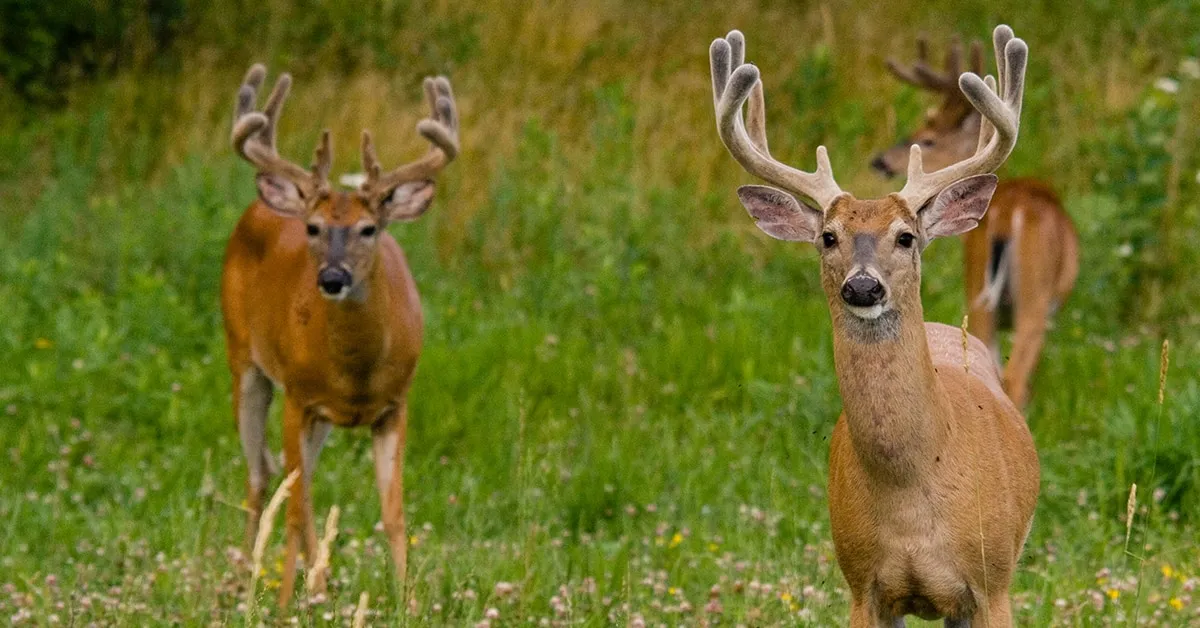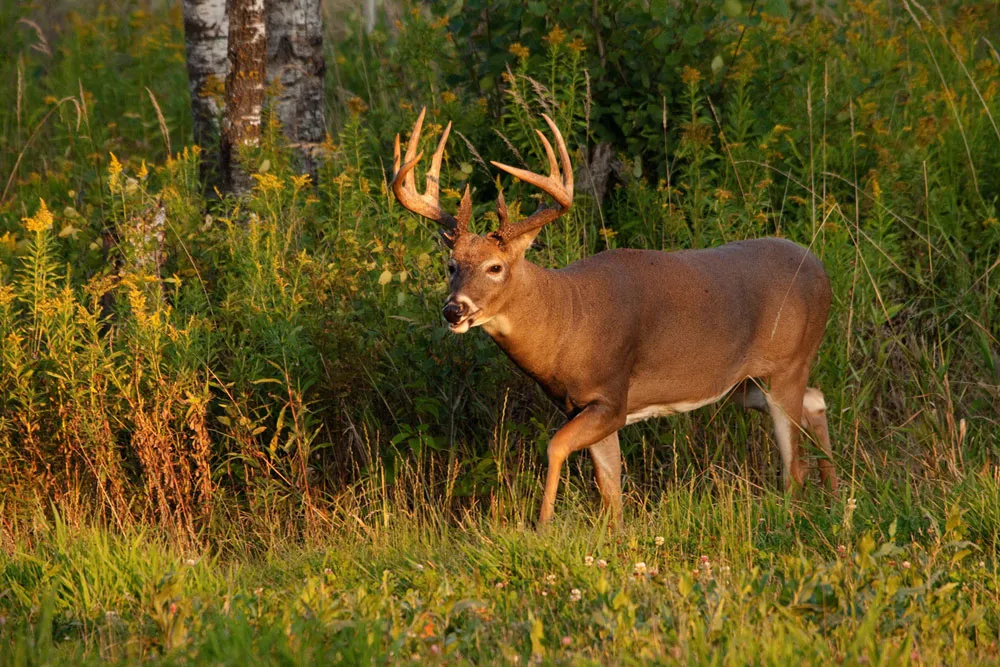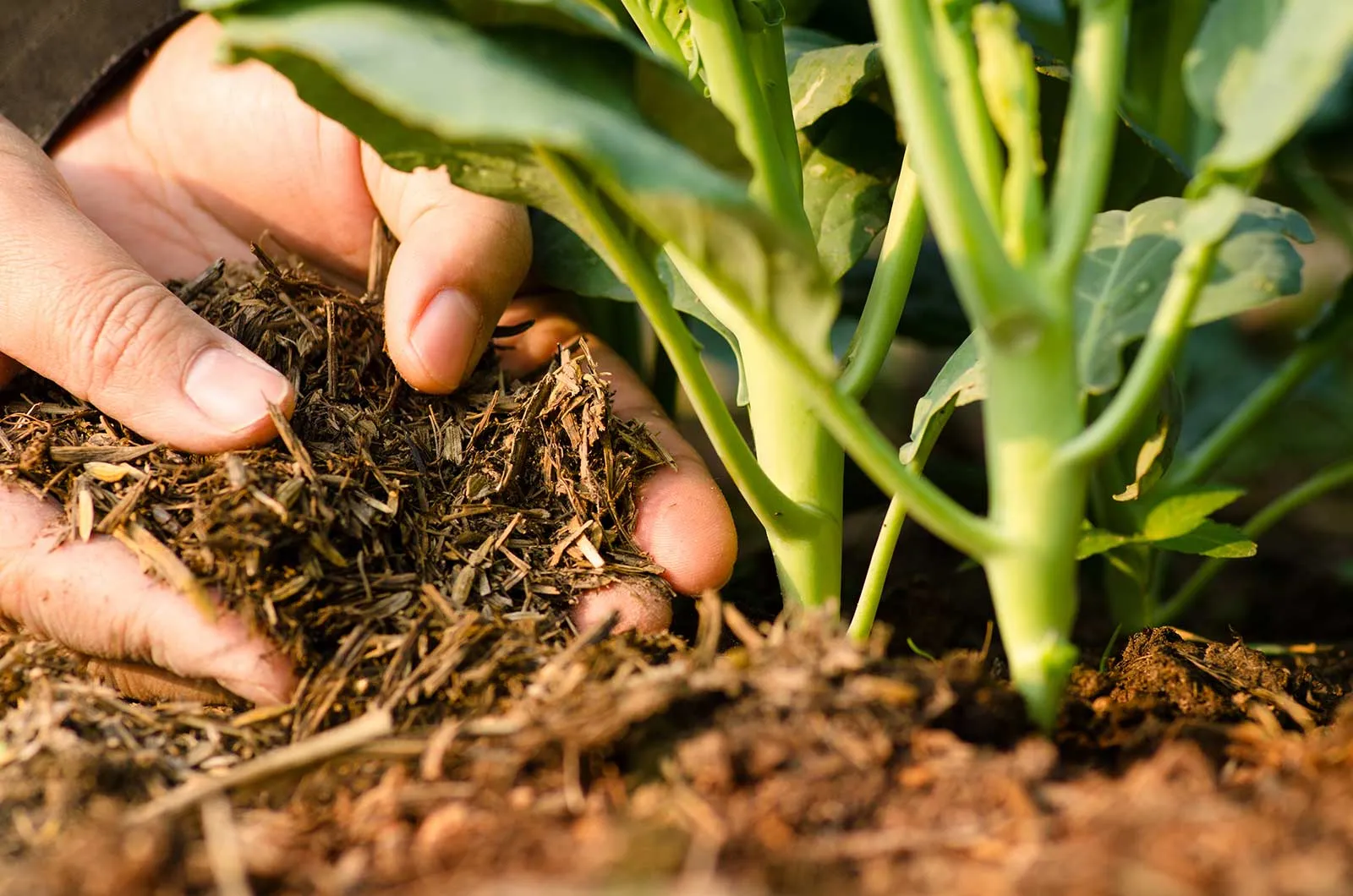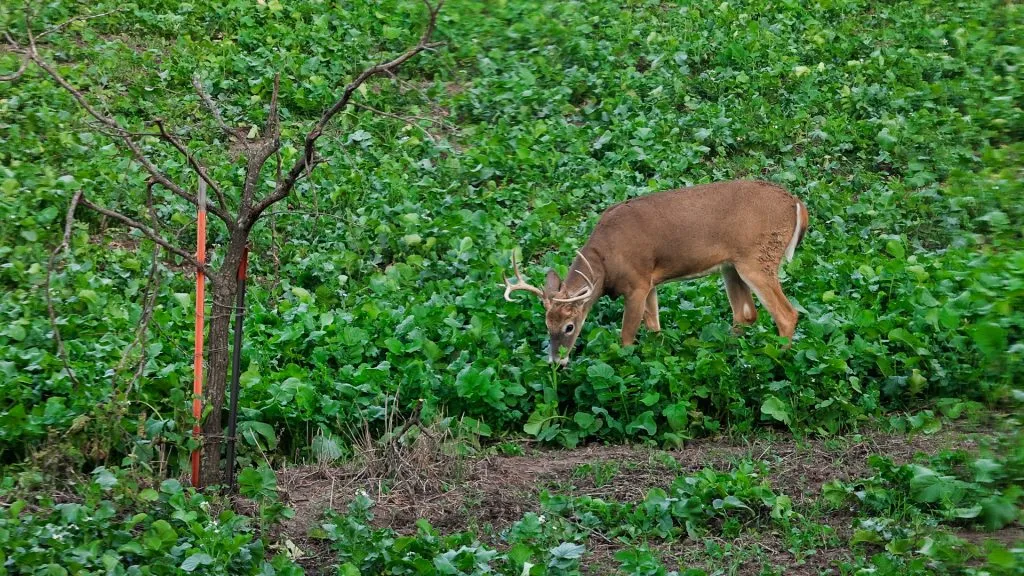Attracting food plots for deer onto your land would be like laying out a red carpet for your woodland neighbours- food plots are the ultimate celebrity treatment.

With bringing together a tasty buffet of native plants, fruits, and shrubs, convert your property into a deer magnet that also attracts and feeds these magnificent creatures.
But it’s not just a matter of alluring Bambi and his buddies: food plot will also enhance property biodiversity, enrich wildlife, and maybe even the quality of your hunting experience for deer.
Food Plots for Deer Management
Food plots are now very important in deer management programs throughout much of North America.
These areas, strategically planted, provide supplemental nutrition to whitetail deer, while at the same time enhancing the hunter’s ability to observe or harvest an adult buck.
The food plot, where well-designed for multiple purposes, is integrated into a more comprehensive plan of deer management- from enhancing herd health to improving hunting success.
Food plotting evolved from an early and basic throw-and-grow to a far more extensive agricultural system designing of which is meant solely for the deer.
Today’s serious land managers realize that effective bigger food plots must be well thought through concerning site, size, plant selection, and maintenance.
In this all-encompassing guide, you will be walked through setting up and maintaining great food plots that attract deer and nourish them throughout the year.
Deer Nutritional Needs Through the Seasons
Deer have an extremely broad range of nutritional requirements depending on the season, so a successful food plot must sufficiently address these changes in needs.
In the spring and summer, deer need these high-protein forages to help put growth on their fawns and to develop antlers. In the fall, however, the objective shifts towards much more energy-giving foods that lay down fat reserves for winter.
During the winter, highly energetic food types are essential for the deer to make a living when there is no natural forage available.
Protein needs during antler growth in bucks and late gestation/lactation in does have been known to peak often around 16-20% of their diet.
For this reason, these summer food plots are usually planted with high-protein legumes like soybeans, cowpeas, and lablab.
As fall approaches, the instinct of a deer will push it to seek carbohydrate-rich food sources such as corn, grain sorghum, and brassicas for fat storage.
Winter survival foods need to be available above the snow for easy access and quick energy, making standing crops such as winter wheat and rye a great choice.
Choosing the Perfect Spot for Your Deer Food Plots

Location is of paramount importance when it comes to the success of your food plot. Several factors should be kept into consideration when scouting for planting site locations.
First, observe walking patterns of deer on your property through trail cameras and other sign evaluations.
Preferred locations are often at the edges between bedding areas and larger food sources, funnels between woodlots, or areas near water sources.
Then comes soil quality, which dictates what you can grow. Soil tests should be completed before committing to a location.
The best growth potential exists in areas exposed to sunlight for at least 6-8 hours a day for most food plot species.
Also consider how easily deer can access the food plot as well as how accessible it is to your equipment – from a practical standpoint, you want the plot to be easy for deer to access, but not so easy that they feel exposed and vulnerable.
Size matters when drawing up food plots. Small, irregularly shaped plots (1/4 to 1 acres) can work better than large open fields.
They are good for making deer feel safe. In large properties, it is more effective to create several smaller plots than to have one big plot across your land.
Top Food Plot Plants for Year-round Attraction to Deer
Choose your food plot plants based on what you want to achieve, your soil conditions, and the season when effectiveness is at its peak.
Warm-season annuals such as soybeans, cowpeas, and lablab have parameters very high in production.
They are great during the summer when deer need that extra high protein forage. Generally, the legumes average around 25-30% protein and very palatable to deer as they develop.
Cool-season annuals like brassicas (turnips, rape, kale) and cereal grains (oats, wheat, rye) yield super nutrition during fall and winter.
After starches in brassicas turn to sugars with frost, they become especially good. Cereal grains could also definitely guarantee winter forage.
The likes of clover and chicory yield production year after year as these are generally well-maintained and hence, very effective even long-term cost-effective alternatives.
Many managers will plant combination plots to maximize effectiveness. An attractive mix would be oats and winter wheat for color in the fall with brassicas that get better palatability during the later part of winter.
Pairing a perennial clover with annual chicory also makes a plot effective in providing nutrition in multiple seasons.
Soil Prep and Proper Fertilisation for Growth

The right soil preparation starts the foundation of a successful food plot. Firstly, take soil samples from several different locations within your intended plot area.
These tests will tell you what the pH levels are and what nutrients are deficient and must be addressed before planting.
Most food plot crops have an optimum ph range of 6.0 to 7.0. Therefore, if your soil has an acidity higher than that, apply agricultural lime as per the recommendations of your soil test.
After correcting ph, the next focus should be on establishing a good seedbed. For small plots, the rototiller would be an excellent tool, while larger areas would require discing.
Remove rocks and thoroughly break clumps of soil into a fine, firm seedbed to promote good seed-to-soil contact. Do not overwork the soil, as this may lead to compaction and poor drainage.
Soil testing should be the basis for fertilisation to avoid spending money on unnecessary amendments.
Balanced fertilisers such as 19-19-19 do very well with many plot crops, but some plants may demand varying nutrient ratios.
For instance, legumes fix nitrogen in the soil while brassicas do well at higher nitrogen levels and do not have a preference for their phosphorus and potassium levels.
Deer Attraction Planting Techniques
Successful planting considers timing, seed rate, and depth at planting. Cool-season crops should be sown in the last summer or early fall, nearly 30 to 45 days before the estimated first frost in the area.
Warm-season plants should be sown after the risk of frost is gone and the soil temperature has warmed up.
Seeding rates are further dependent on whether you are monocropping or mixing plants.
Generally, higher rates should be used when broadcasting seed and lower rates when using a drill.
Small-seeded plants like clover and brassica should be shallowly planted, i.e., at about 1/4 inch or less, while larger seeds such as soybeans and corn can be sown at 1 to 1.5 inches deep.
Cultipackers or rollers could also be helpful when applied after planting to improve seed-soil contact during germination for small-seeded crops.
Soil packing for moisture preservation and improving germination rates is beneficial in dry conditions. The herbicides are available for killing existing vegetation before direct no-tilling with a no-till drill.
Long-Term Maintenance and Management of Food Plots

Establishment of the plot is the beginning; it will become productive years in successive harvesting by proper maintenance.
Regular mowing controls weeds in perennial plots such as clover and stimulates palatable growth.
The most suitable cutting height always depends on the plant species, but it normally falls between 6-8 inches for most food plot crops.
Control of weeds is an almost continuous problem within a food plot. Selective herbicides for broadleaf weed control in grass crops could do well when applied in cereal grains.
Grass-specific herbicides for legume plots would control weeds of concern, without affecting the desirable plants. Read and follow the labels carefully on all herbicides, because misapplication could injure your food plot crops.
Soil fertility maintenance will require periodic soil tests and amendments. Even the best-maintained plots will undergo nutrient uptake by growing plants and nutrient leaching in time.
Annual soil tests can help you balance fertilisation to keep the plants growing optimally. In perennial plots, overseeding can help maintain thick stands as older plants thin out.
Changing the location of the plots or the types grown in them prevents the buildup of disease and depletion of soil nutrients.
Most properties will work well with a three- to five-year rotation, allowing plots to be shifted to fresh ground and allowing earlier ones to recover.
The practice also keeps deer interested, as new food sources become available in different locations.
Hunting Strategies Around Food Plots
Properly planned outlines for food plots can greatly enhance the possibilities for hunting, but require careful placement of stands and hunting tactics.
Do not place stands too close to the edge of the plot, as mature bucks will often hold back from entering wide-open areas in daylight. Rather, the lace stands 50-100 yards back along the trails leading to the plot.
Hunting direction always should be decided by the direction of wind. Hunt with several other access routes so as not to contaminate any place with human scent.
Most effective hunting is best done early in the morning when moving into a bedding place with food plots close by; while evening hunts are more successful, hunting between plots and bedding areas.
Setting up staging areas where bucks can feel comfortable heading into clear areas near food plots would be an ideal arrangement.
Most of the transition areas are usually formed by dense foliage just slightly inside the woods from the plot, which tends to have matured deer shot during the hours when the gun would be effective.
Deployment of trail cameras is there to be placed at the plot edge and approaching trails, therefore, determining the pattern without disturbing it.
Final Thought
Establishing and sustaining high-quality food plots is time-consuming and exhausting work, but the result makes it worthwhile.
Well-managed food plots do not increase hunting success only, however, they complement herd health overall, promote healthy antler production, and allow greater deer preservation during the winters.
Moreover, they are excellent through-the-door wildlife viewing sites avenue in adding diversity to your property.
Keep in mind food plots within a habitat management scheme, including timber management, native forage enhancement, and water development.
With a real understanding of deer nutrients, proper plant selection, and maintenance, you would be able to design premium feeding areas that you and your deer would benefit from for many seasons to come.
